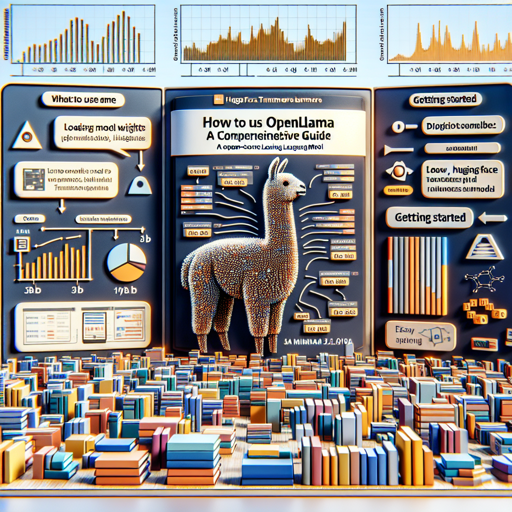Welcome to your definitive guide on utilizing OpenLLaMA, the open-source replica of Meta AI’s LLaMA. This article breaks down the process step-by-step to ensure even beginners can jump in without a hitch. Whether you’re keen to integrate OpenLLaMA into your projects or just curious about its performance, read on to unlock its potential!
What is OpenLLaMA?
OpenLLaMA is a permissively licensed open-source reproduction of Meta AI’s LLaMA large language model. It features models with 3B, 7B, and 13B parameters, trained on a mixture of diverse datasets to yield impressive results in language tasks. Let’s dive into how to get started with it!
Getting Started
This section will outline how to load the OpenLLaMA model weights, with a special focus on using the Hugging Face Transformers library and the EasyLM framework.
Loading the Weights with Hugging Face Transformers
OpenLLaMA model weights can be easily loaded using the Hugging Face Transformers library. Below is an example of how to do this:
import torch
from transformers import LlamaTokenizer, LlamaForCausalLM
# Specify model path here
model_path = "openlm-research/open_llama_3b_v2"
tokenizer = LlamaTokenizer.from_pretrained(model_path)
model = LlamaForCausalLM.from_pretrained(
model_path, torch_dtype=torch.float16, device_map="auto"
)
prompt = "Q: What is the largest animal?\nA:"
input_ids = tokenizer(prompt, return_tensors="pt").input_ids
generation_output = model.generate(
input_ids=input_ids, max_new_tokens=32
)
print(tokenizer.decode(generation_output[0]))In this code, you are essentially inviting the model to generate responses based on your input—the prompt is like rolling out the red carpet for OpenLLaMA to showcase its knowledge.
Understanding the Code: The Dinner Table Analogy
Imagine your input prompts as guests at a dinner party. Each guest represents a different sentence or query you want to address. The tokenizer acts like a helpful waiter, transforming your guest’s nuanced request for attention into the specific needs necessary for service. The main model then serves the meal, or in this case, the generated answer, directly to you based on what the guests discussed. The more well-prepared your guests (prompts) are, the better and more focused the meal (response) will be!
Evaluating with LM-Eval-Harness
You can also evaluate the performance of your OpenLLaMA model using the lm-eval-harness. Just as we need to test the quality of a dish at a restaurant, here we check how well our model performs using the evaluation harness. It’s crucial, however, to bypass the fast tokenizer as it can lead to unpredictable tokenization errors.
Troubleshooting Common Issues
- Tokenizer Errors: If you see inconsistencies in tokenization, ensure you’re using the correct tokenizer as mentioned above. Avoid the fast tokenizer for now.
- Model Performance: If the model is not behaving as expected, ensure that you are using the correct weights for the model version you intend to use.
- Compatibility Issues: Make sure you are using compatible versions of libraries—updating them can often solve unexpected problems.
For more insights, updates, or to collaborate on AI development projects, stay connected with fxis.ai.
Conclusion
At fxis.ai, we believe that such advancements are crucial for the future of AI, as they enable more comprehensive and effective solutions. Our team is continually exploring new methodologies to push the envelope in artificial intelligence, ensuring that our clients benefit from the latest technological innovations.
Final Thoughts
OpenLLaMA is not just a tool; it’s a gateway to exploring the universe of language models in an open-source environment. With this guide, you are now equipped to delve into its potential and harness its capabilities for your own projects. Happy coding!

